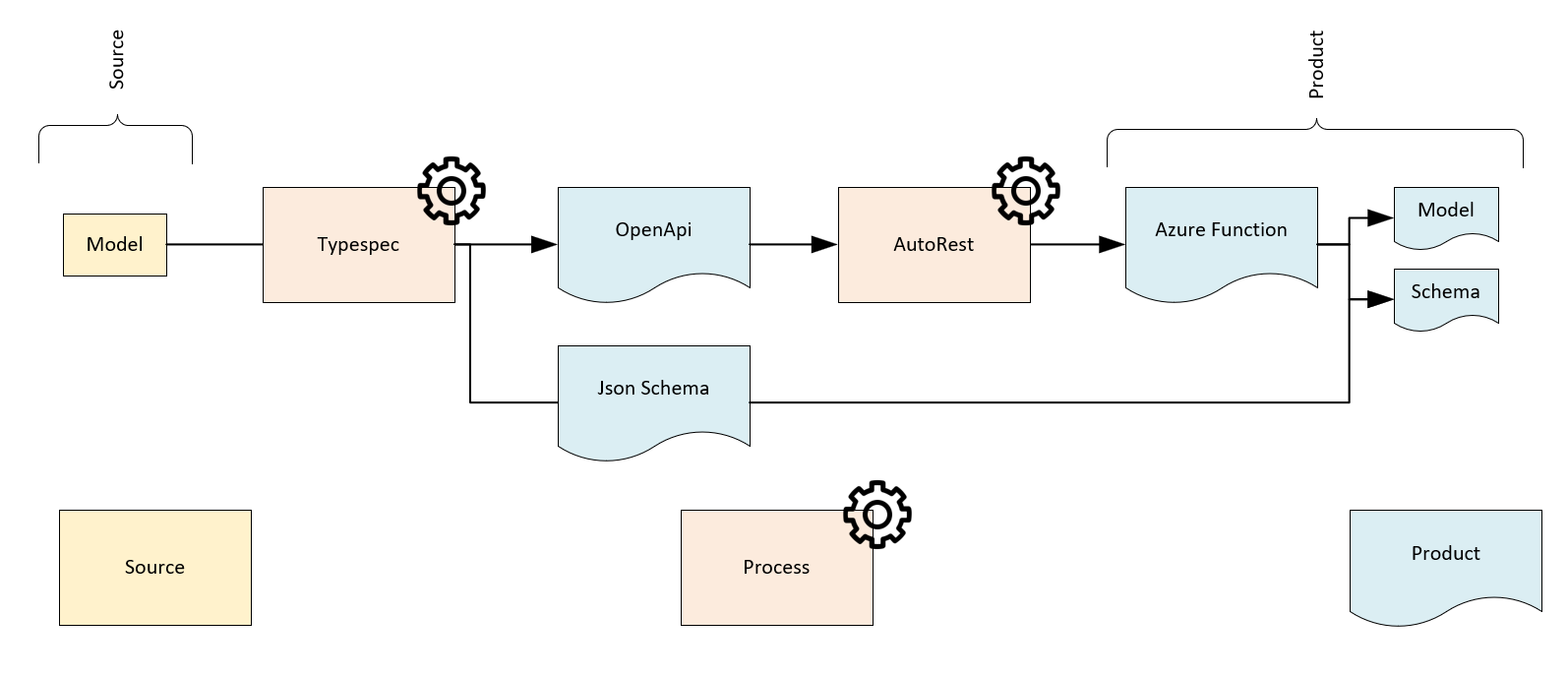
Description
API First is an approach to software development that prioritizes the design and implementation of APIs before building the underlying application or service. This approach emphasizes the importance of APIs as the primary means of communication between different components of a system, as well as between different systems.
By designing APIs first, developers can ensure that the APIs are well-defined, consistent, and easy to use. This can lead to better collaboration between teams, faster development cycles, and more efficient integration with third-party services.
The approach detailed here takes the responsibility for creating the API definition away from the developer and places it in the hands of a specialist tool. This ensures that the API definition is created in a consistent manner and adheres to best practices. The API definition is then used to generate the client and server code, which can be integrated into the application or service. This approach can help to reduce errors and inconsistencies in the code, as well as improve the overall quality of the API. The API First approach can be particularly beneficial in complex systems where multiple teams are working on different components. By defining the APIs first, teams can work independently while still ensuring that their components will integrate seamlessly with the rest of the system. The API First approach can also help to improve the overall user experience of the application or service. By designing APIs that are easy to use and understand, developers can create applications that are more intuitive and user-friendly. Overall, the API First approach is a powerful way to improve the development process and create high-quality applications and services that are built around well-designed APIs.
Tools
The tools used in this process are:
- TypeSpec - A tool for designing and generating APIs
- AutoRest - A tool for generating client and server code from API definitions
- Quarto - A tool for creating and publishing documents
- LUA - A lightweight scripting language used for automation
- PowerShell - A task automation and configuration management framework
- C# - A programming language used for building applications and services
- Azure Functions - A serverless compute service used for building and deploying applications and services
Process
The process for creating an API using the API First approach is as follows:
- Design the API - Use TypeSpec to design the API, including the endpoints, request and response formats, and any authentication or authorization requirements.
- Generate the API definition - Use TypeSpec to generate the API definition in a standard format, such as OpenAPI or Swagger.
- Generate the client and server code - Use AutoRest to generate the client and server code from the API definition.
- Integrate the code - Integrate the generated code into the application or service.
- Test the API - Test the API to ensure that it works as expected and meets the requirements.
- Document the API - Use Quarto to create documentation for the API, including usage examples and any relevant information for developers.
- Automate the process - Use LUA and PowerShell to automate the process of generating the API definition, client and server code, and documentation.
Benefits
The benefits of using the API First approach include:
| Category | Qualities |
|---|---|
| 🧑💻 Developer Experience & Productivity | - Improved developer productivity and satisfaction - Easier onboarding of new developers and teams - Reduced errors and inconsistencies in the code - Easier maintenance and updates to the API - Improved versioning and backward compatibility of the API - Better integration with DevOps and CI/CD processes |
| 🚀 Development Efficiency & Technical Excellence | - Faster development cycles - More efficient integration with third-party services - Consistent and well-defined APIs - Better quality APIs - Better support for multiple platforms and devices - More effective monitoring and analytics of API usage - More effective management of API lifecycle and governance |
| 🌐 Business Alignment & Strategic Impact | - Better alignment with business goals and requirements - Increased flexibility and scalability of the application or service - Enhanced ability to adapt to changing market and customer needs - Greater overall success and impact of the application or service in the market - Increased revenue and business opportunities through the API - Better alignment with industry trends and best practices in API development |
| 🤝 Collaboration & Communication | - Improved collaboration between teams - Improved communication and transparency with stakeholders and customers |
| 🎨 Innovation & Design | - Greater innovation and creativity in API design - Improved user experience |
| 🔒 Trust, Security & Adoption | - Enhanced security and compliance with industry standards - Greater adoption and usage of the API by developers and users - Enhanced reputation and credibility of the organization providing the API |
Summary
The API First approach is a powerful way to improve the development process and create high-quality applications and services that are built around well-designed APIs. By prioritizing the design and implementation of APIs, developers can ensure that their applications are more efficient, flexible, and user-friendly. The tools and processes outlined in this document can help to streamline the API First approach and make it easier for developers to create and maintain high-quality APIs.